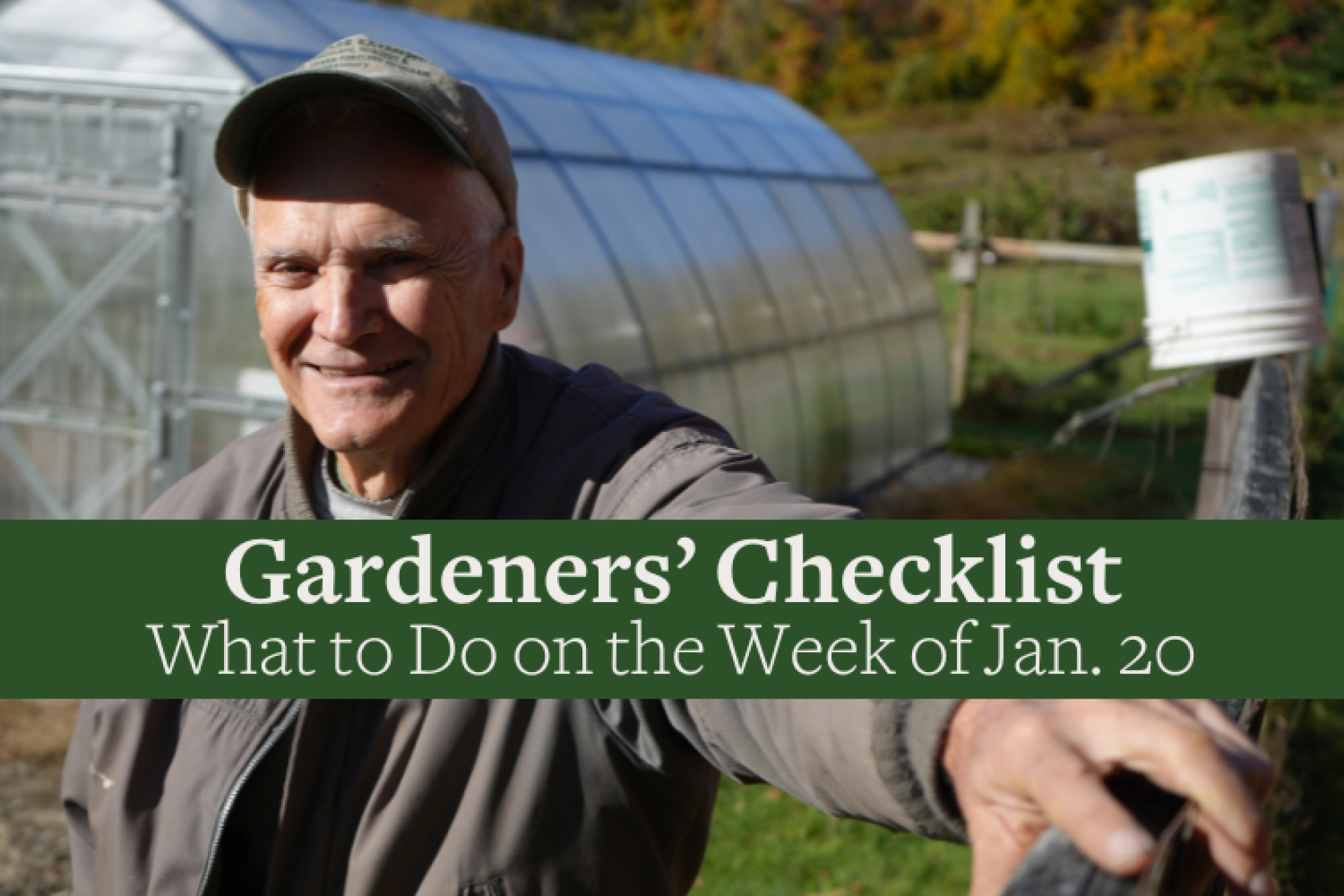You are here
Gardeners Checklist: Here Is What to Do on the Week of Jan. 20
Gardeners Checklist: Here Is What to Do on the Week of Jan. 20
By Ron Kujawski
* Relive the good old days; think nasturtium. This old favorite provides colorful, non-stop blossoms all summer. Keep in mind that nasturtiums don’t transplant well, so sow (I couldn’t resist that pairing of words) nasturtiums directly into garden soils in late May. I think nasturtiums are best grown in hanging baskets. In this case, direct sow the seeds into soil-filled baskets no later than the second week of April to have flowering baskets for Memorial Day.
* Propagate rex begonia by snipping an older but healthy-looking leaf or two from the parent plant. Use a utility knife or single-edge razor blade to cut off the leaf petiole. Notice that the leaf veins radiate out from the base of the leaf where the petiole was attached. Cut the leaf into V-shaped sections so that each resulting piece has a vein running down the middle. Dip the tip of each V section into a rooting powder (available at garden centers) and stick the section into a pot filled with coarse sand, leaving the top half of the leaf tissue exposed. Be patient! It will take at least 10 to 16 weeks before the leaf sections root and produce a small plant ready for potting. Also, try taking leaf cuttings from African violets, snake plants, and gloxinias.
* Stay with shrub roses that are grown from cuttings rather than grafts if you're planning to add roses to your landscape in spring. Shrub roses are hardier and require less maintenance than hybrid or grafted roses. One of the best of the newer shrub roses are those called “Knockout” roses.
* Freeze or dehydrate garlic remaining in storage if any of the bulbs are showing signs of shriveling and the cloves are turning brown. To freeze garlic, chop up the peeled cloves and put them into ice cube trays in the freezer. The same can be done with onions and leeks; no blanching is required. At home, we use a commercial electric dehydrator to dry sliced cloves of garlic and onions. The health-benefiting natural chemicals in garlic are best preserved by freezing or dehydrating, as opposed to pickling.
* Be sure to include culinary herbs as you compile your seed list. Fresh and dried herbs are another food item whose supermarket price seems to have sky-rocketed. Herbs are easy to grow, either in the garden or in pots. A bonus is that they can be kept going indoors through the winter.
*
I have to be careful not to get so caught up in studying seed and plant catalogs, dreaming of the gardens to be, that I fail to start the indoor seeding phase of this year’s gardens. In fact, I’ll be starting some seeds (e.g., sweet Spanish onions, celery) soon. That means the old light bulbs in my fluorescent fixtures need to be replaced, sterile germination mixes need to be purchased, and seed flats and containers need to be washed and sterilized. The latter I do by soaking the washed containers in a solution of one part household bleach to nine parts of water. These are then rinsed in clear water. I also wipe down the propagation bench and surrounding area with the bleach solution. The most important lesson I’ve learned from many years of starting my seedlings indoors is: “Keep it clean.”
Ron Kujawski began gardening at an early age on his family's onion farm in upstate New York. Although now retired, he spent most of his career teaching at the UMass Extension Service. He serves on Berkshire Botanical Garden’s Horticulture Advisory Committee. His book, Week-by-Week Vegetable Gardener’s Handbook, is available here.
Help Our Garden Grow!
Your donation helps us to educate and inspire visitors of all ages on the art and science of gardening and the preservation of our environment.
All donations are 100 percent tax deductible.


